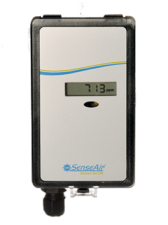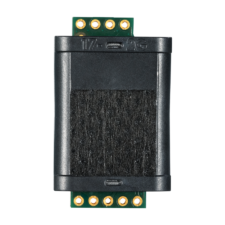CO₂ sensor vs. motion detector
Can you use a CO₂ sensor instead of a motion detector sensor, e.g. using PIR or microwave technology, for presence detection? The short answer is yes and no. The long answer is that you probably want to bundle both the CO₂ and PIR sensing technology.
Today, most of us wish to contribute to a safe and environmentally friendly world. One way of doing this is to cut energy consumption by monitoring the occupancy of people in a facility. And on the other end, you can also apply presence detection to find any unwanted presence and activity in facilities and homes when no one is supposed to be there, e.g. a burglar alarm.
A widely used sensor technology for this is passive infrared (PIR) sensors. They are remarkably perceptive of sudden or instantaneous changes in their detected level of heat radiation, as emitted by people and other warm-blooded animals, for instance. That’s why they are used for fast response systems like soap dispensers or room light activation. However, one shortcoming they have is that they will not detect the presence of non-moving heat radiation and will therefore turn lights off (or whatever is controlled by the PIR) when they don’t detect continuous changes in the background, e.g. a person sitting still. During hot summer days, the PIR can also be generally under-sensitive in differentiating the typical heat from bodies and the warmer ambient surfaces, and during cold winter days, they might be oversensitive. A PIR is not an ideal way of managing ventilation or even to be used as a burglar alarm since you can easily fool the system*.
You could also use a microwave motion detection sensor, which will operate as a sonar. They behave much like a PIR but detect motion 360°. One of the big disadvantages of the microwave sensor is that it is too sensitive and might detect motions on the other side of a wall/medium that the radiation can penetrate. It could therefore potentially be triggered by unintended events, like movements outside a facility.
A much more reliable way would be to use a carbon dioxide sensor in addition, which can detect the occupancy of people and animals in a space by their breathing. So, despite immobility, ambient summer heatwaves and activity in nearby zones, the CO₂ sensor will inform not to turn off lights and fills an exemplary role for active lighting retention. People are always breathing, creating an easily perceptible signal slope to detect presence or absence from the zone. If multiple detection zones are deployed, the ₂ sensors can augment a system with other sensors and tell a residential ventilation system when everyone in the family is sound asleep and in what rooms they are, allowing for many Smart Home/Smart Building controls to be more effective.
In conclusion, each sensor has its strengths and more suited applications, but when combining it with a CO₂ sensor the result is much more versatile.
* Sometimes, walking straight towards a PIR can make it think that the heat is too fixed to be from a human object, depending on its resolution. Or body heat can be insulated and masked in other ways.

















































